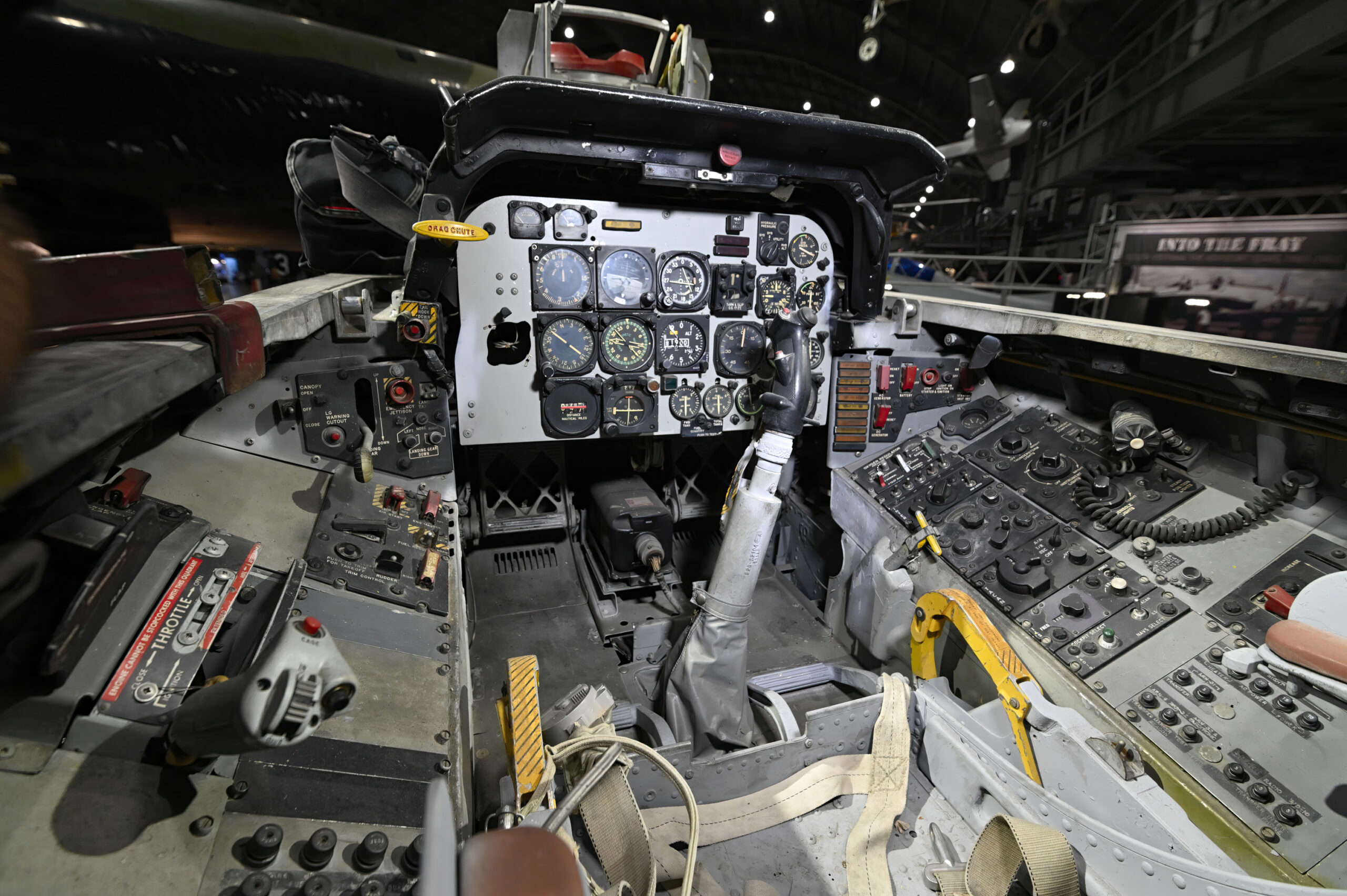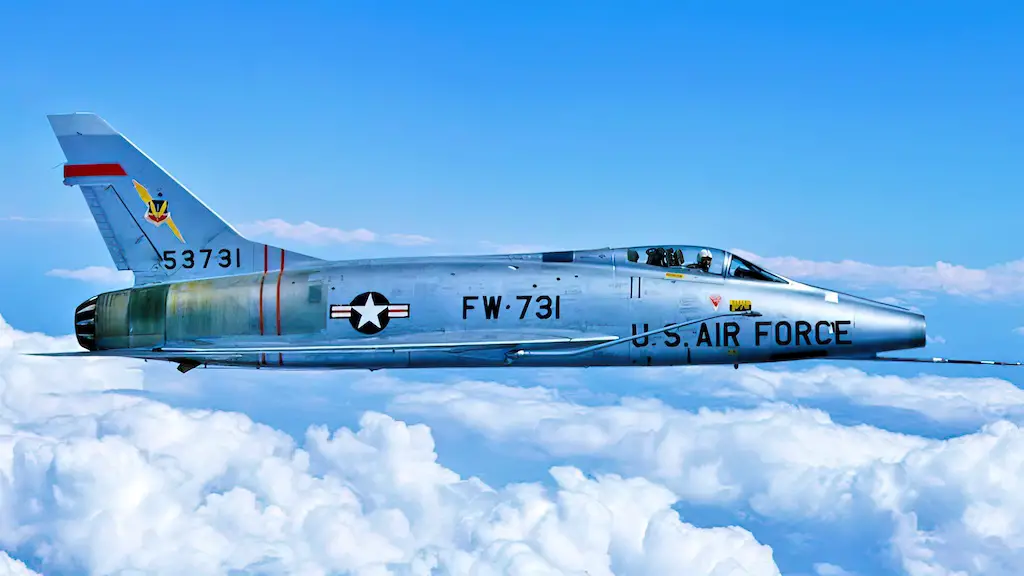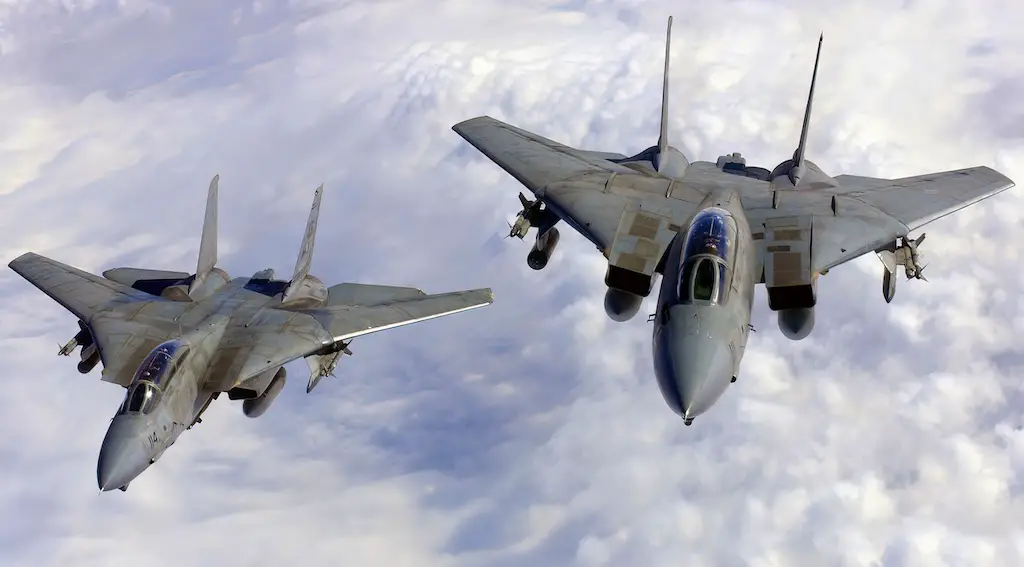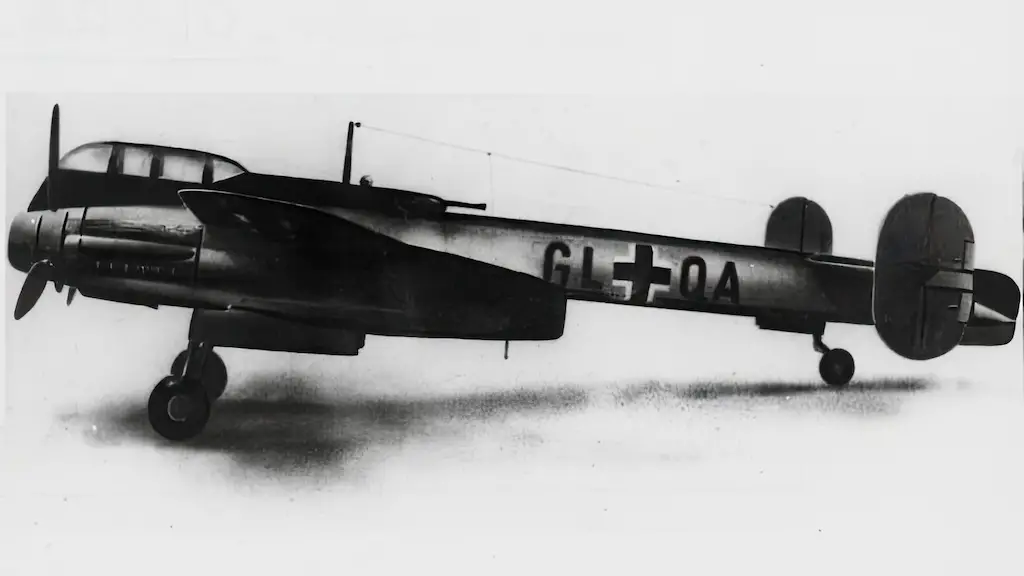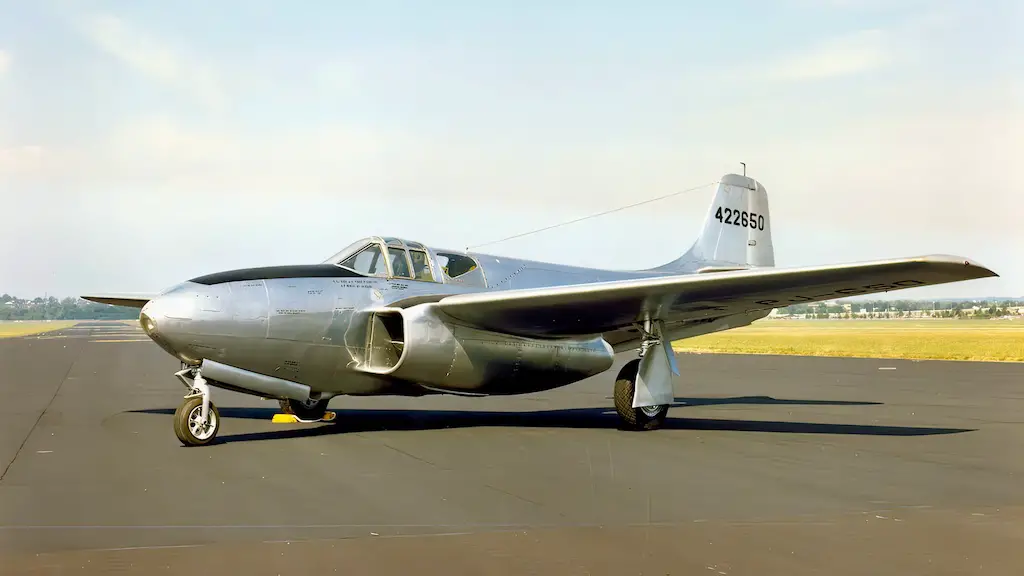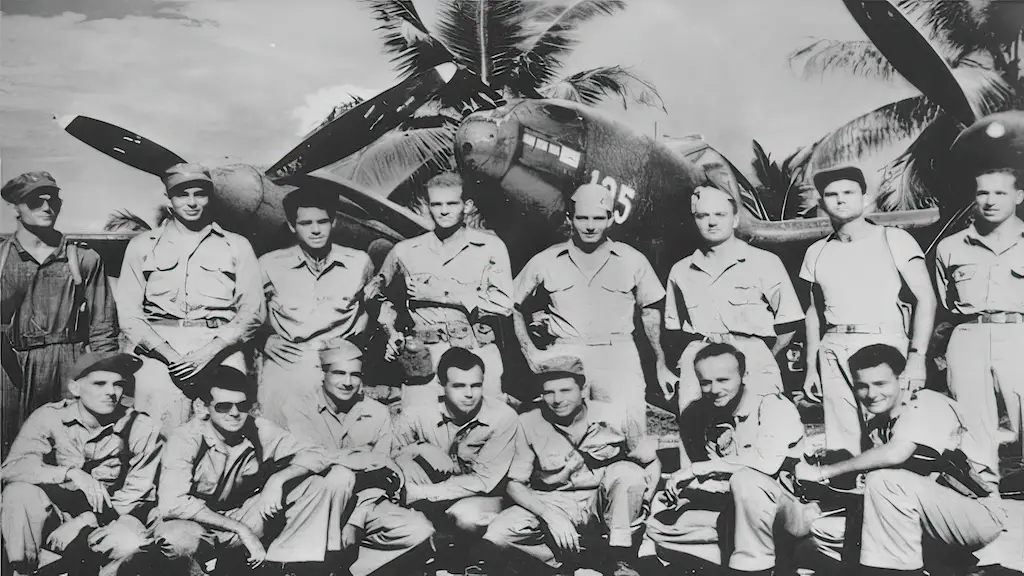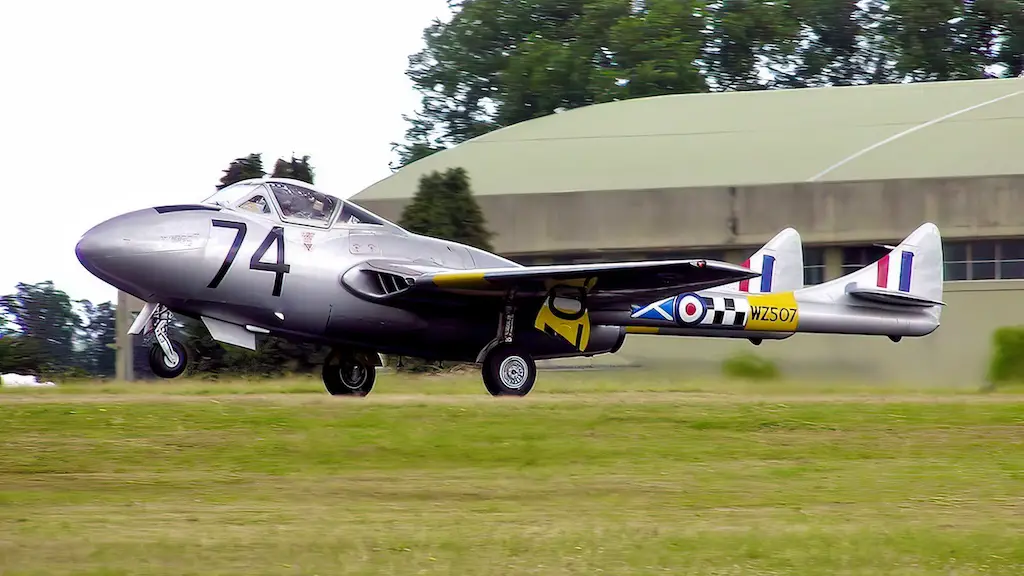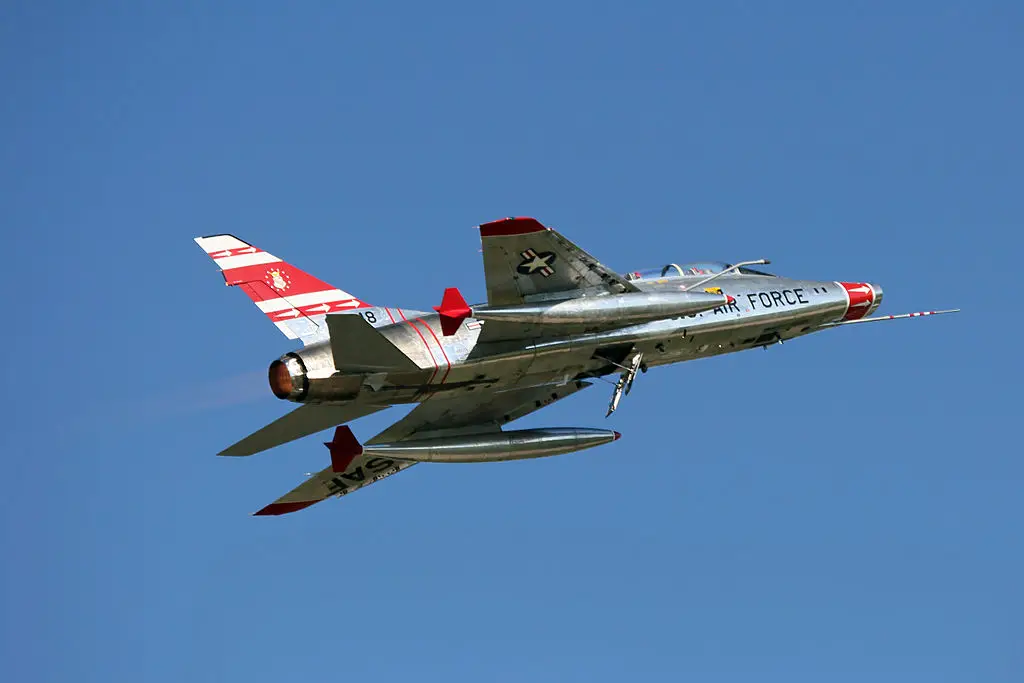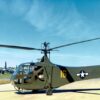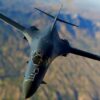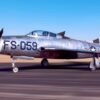Setting the Pace in the Jet Age
In the throes of the emerging jet era, the F-100 Super Sabre, a masterpiece of North American Aviation, majestically graced the heavens. Unleashed in 1953, the Super Sabre was the response to the United States Air Force’s (USAF) pursuit of a supersonic marvel capable of shattering the sound barrier while cruising.
The genesis of the Super Sabre was rooted in the remarkable F-86 Sabre, a war hero during the Korean conflict. Harnessing the lessons learned and the technological strides of the time, the design maestro Edgar Schmued and his team birthed an aircraft that dared to re-envision the future of military aviation.
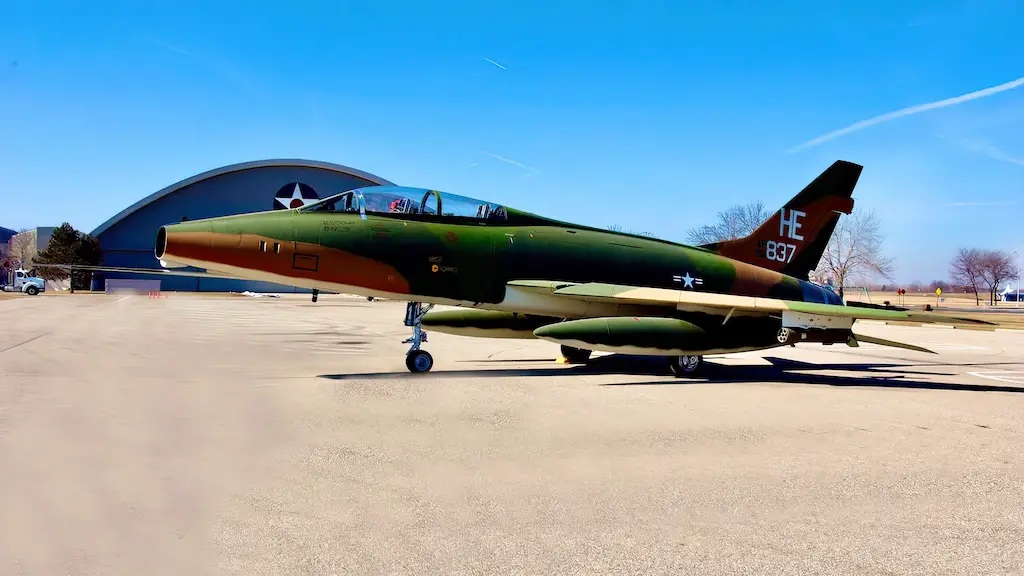
America’s Sonic Guardian
Sporting a streamlined swept-wing profile and a powerful Pratt & Whitney J57-P-7 powerplant, the F-100 surged beyond Mach 1.3, emerging as a quicksilver shield over the United States. It stood as the first USAF aircraft purposed to harbor nuclear armaments, thus becoming a key chess piece in the strategic nuclear standoff during the Cold War.
Nonetheless, the Super Sabre had its share of flaws. Initial variants were troubled by a perilous pitch-up issue leading to a number of fatal crashes. Additionally, its top-tier speed was a sharp contrast to its mediocre slow-speed handling, a characteristic that drew pilots’ criticism.
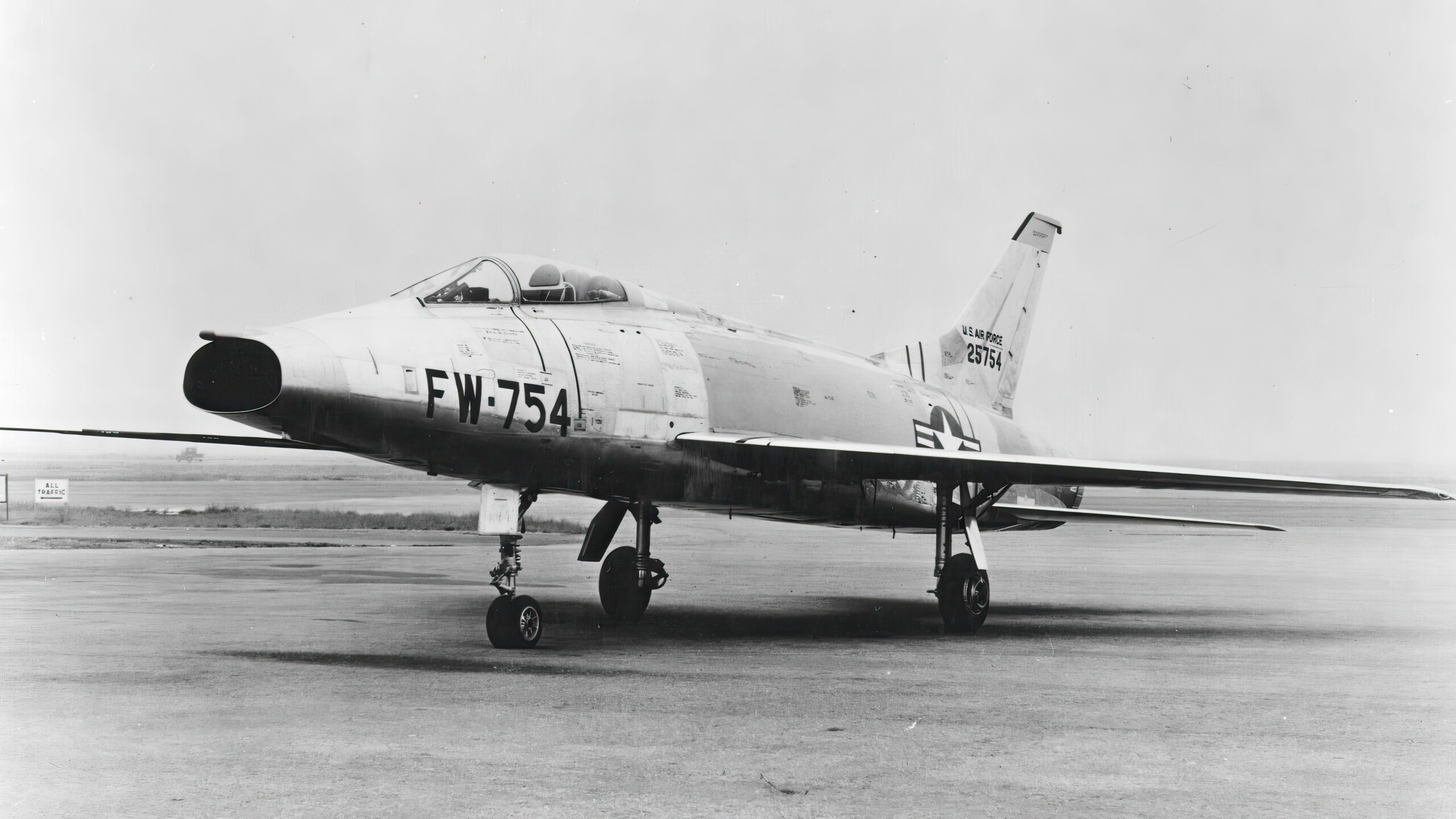
Baptism by Fire
Despite its shortcomings, the F-100 displayed formidable prowess in various battle theatres. It served as a critical air support and air interdiction asset during the Vietnam War, bolstering ground forces and crippling enemy logistics.
It earned its stripes during Operation Rolling Thunder, the USAF’s inaugural extensive air offensive against North Vietnam. The F-100D, a variant equipped with cutting-edge navigation and targeting apparatus, was capable of executing pinpoint airstrikes in any weather conditions, be it day or night.
Golden Twilight
The F-100’s service with the USAF ended in 1972, but its journey was far from over. It continued to serve in various capacities within the Air National Guard until 1979, and was used by several NATO countries well into the 1980s.
The Super Sabre also found fame as a testbed for NASA, pushing the boundaries of aerodynamics and human endurance. The lessons learned from the F-100 paved the way for future generations of fighter aircraft, making it an unsung hero in the evolution of aviation technology.
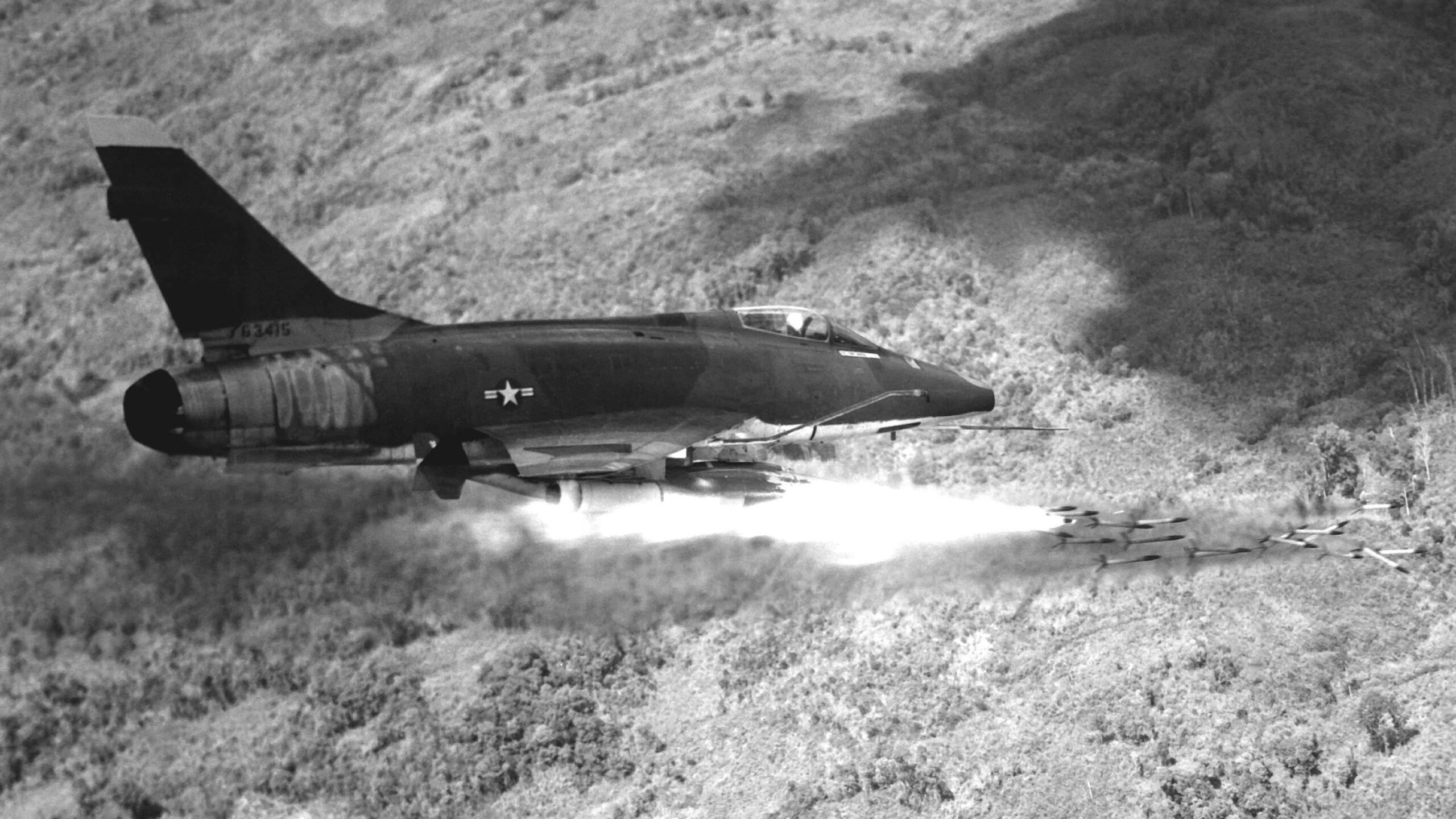
The Super Sabre’s Enduring Legacy
While the F-100 Super Sabre may be long retired, its legacy endures. It was an iconic symbol of a time when technology was rapidly advancing, and nations sought to secure their skies. The Super Sabre demonstrated how innovation, courage, and resilience could create an aircraft that was much more than the sum of its parts – a timeless testament to human ingenuity and the indomitable spirit of flight.
